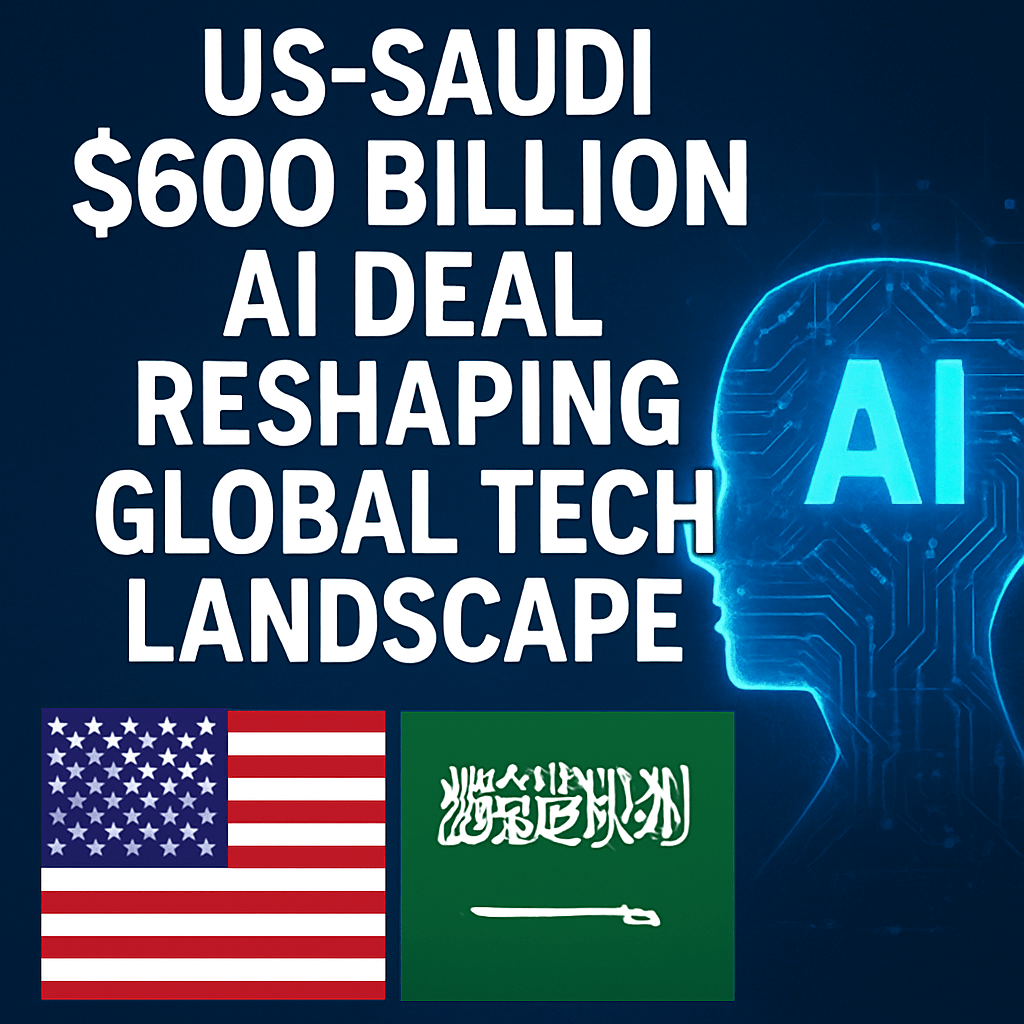US-Saudi $600 Billion AI Deal Reshaping Global Tech Landscape

On 14 May 2024, Nvidia’s shares jumped 5.6 percent after Washington and Riyadh unveiled a multibillion-dollar artificial intelligence (AI) investment programme. Yet, despite the short-term rally, Nvidia remains down 4.5 percent year-to-date as of market close on 13 May amid US-China trade tensions and growing competition from China’s home-grown AI models such as DeepSeek.
Market Reaction and Share Performance
Nvidia closed at $1,065, up from $1,009 the previous session. Analysts at Morgan Stanley raised their price target to $1,200, citing stronger-than-expected demand for data-centre GPUs. Key drivers include cloud service providers locking in Blackwell-series accelerators and sovereign wealth funds diversifying into semiconductor assets.
The US–Saudi AI Investment Conference
During President Trump’s visit to Riyadh, the White House announced a broader $600 billion commitment by Saudi Arabia, comprising:
- Nearly $142 billion in US defence sales.
- $80 billion in bilateral “transformative technologies” including AI, quantum computing, robotics and advanced manufacturing.
- Agreements spanning energy, aerospace and sports infrastructure.
“Our partnership with Saudi Arabia will unlock next-generation AI breakthroughs while safeguarding sensitive technology,” said a senior Commerce Department official.
Nvidia’s Technical Roadmap to Power Saudi AI
Nvidia agreed to supply up to 18,000 GB200 Grace Blackwell GPUs paired with InfiniBand networking in phase one. Technical highlights include:
- Grace Blackwell GPU: Built on TSMC’s 5 nm process, featuring 192 tensor cores and 48 GB HBM3 memory, delivering up to 1.5 exaflops of FP16 throughput.
- InfiniBand HDR 200: Provides 200 Gbps per port with sub-microsecond latency for scale-out clusters.
- AI Factory Design: A modular data-centre architecture capable of 500 MW peak power draw, with PUE targets below 1.2 through advanced liquid cooling.
HUMAIN, a Public Investment Fund-backed subsidiary, will host these systems across three newly built AI campuses near Riyadh, Dhahran and NEOM.
US Export Controls and Policy Shifts
The Commerce Department rescinded Biden-era AI diffusion rules that would have tightened licensing for chips sent to China, Saudi Arabia and the UAE. The reversal—published in the Federal Register on 14 May—cancels restrictions due to take effect on 15 May, while new BIS guidance refines export licensing criteria around ECCN 4A090 and 5A991.
“We will pursue a bold, inclusive strategy to advance American AI with trusted partners, while preventing adversaries from acquiring leading-edge technology,” the DOC stated.
Implications for Global AI Infrastructure and Supply Chains
Experts warn this deal accelerates a two-track AI supply chain. Western providers like Nvidia and AMD will deepen ties with Gulf states, whereas China is fast-tracking domestic chips such as the SiPearl Rhea and Huawei’s Ascend series. Analyst John Walsh of Crédit Agricole notes:
“Saudi Arabia’s aggressive capex signals a tectonic shift: sovereign funds are now strategic partners in tech supply chains, not just passive investors.”
Strategic Impact on US–China Tech Competition
With export curbs loosened, Beijing may still face hurdles acquiring ultra-dense AI accelerators. Yet Chinese cloud giants like Alibaba and Baidu are ramping up local semiconductor fabs and licensing third-party IP for vector processors. This duel over chip access and ecosystem control will define the next five years in global AI leadership.
Future Outlook and Expert Perspectives
- Capacity Expansion: HUMAIN aims for a national AI capacity of 1 exaflop by 2027, requiring over 50,000 high-end GPUs.
- Energy Transition Synergies: Saudi Aramco Digital’s collaboration with Nvidia could optimise oil-and-gas operations using digital twins powered by real-time AI inference.
- Policy Ramifications: Expect follow-on agreements with the UAE and Qatar as Gulf states vie for regional AI dominance.
As global tensions over chip access persist, tech firms will need to navigate a complex matrix of export regulations, sovereign partnerships and accelerated R&D competition.